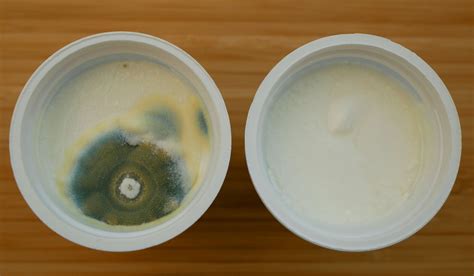How to Tell if Your Yogurt Has Gone Bad
Yogurt, a delicious and healthy snack, can unfortunately spoil if not stored properly. Knowing how to identify spoiled yogurt is crucial to avoid foodborne illness. This guide will help you determine if your yogurt is still safe to eat.
Visual Inspection: The First Line of Defense
The first step in determining if your yogurt is bad is a visual inspection. Look for these key signs:
Changes in Texture:
- Separation: A significant separation of whey (the watery liquid) from the yogurt is a major red flag. While some slight separation is normal, excessive separation indicates spoilage.
- Mold: The presence of any mold, no matter how small, means the yogurt has gone bad. Discard it immediately. Mold can produce mycotoxins, which are harmful.
- Unusual Lumps or Curdling: While yogurt naturally has a somewhat thick consistency, an unusually chunky or lumpy texture, beyond its normal consistency, can signify spoilage.
Changes in Appearance:
- Color Change: A significant change in color from its original shade is a warning sign. Spoiled yogurt might appear more watery or have unusual discoloration.
- Off-Putting Appearance: If the yogurt looks slimy, bubbly, or otherwise unappetizing, it's best to err on the side of caution and throw it away.
Smell Test: Trust Your Nose
Your sense of smell is a powerful tool in determining food safety.
Sour or Rancid Odor:
Spoiled yogurt will often have a significantly more sour or pungent smell than fresh yogurt. A rancid or unpleasant odor is a clear indication that it's no longer safe to consume.
Taste Test (Proceed with Caution!):
While visual and smell tests are highly recommended, a small taste test can offer final confirmation (only if the visual and smell tests haven't already indicated spoilage).
Important Note: Only take a tiny taste. If it tastes off, sour beyond its typical tartness, or bitter, immediately spit it out and discard the yogurt.
Yogurt Storage for Longevity
Proper storage significantly extends the shelf life of your yogurt:
- Refrigeration: Always keep your yogurt refrigerated at or below 40°F (4°C).
- Check Expiration Dates: Pay close attention to the "Best By" or "Expiration" date printed on the container. While yogurt might still be safe to eat slightly past the date, it's best to consume it before then for optimal quality.
- Proper Sealing: Ensure the yogurt container is properly sealed to prevent exposure to air and contamination.
When in Doubt, Throw it Out!
Remember, foodborne illnesses can be serious. When unsure about the condition of your yogurt, it's always best to discard it rather than risk getting sick. Don't hesitate to throw away yogurt exhibiting any signs of spoilage. Your health is worth it!
